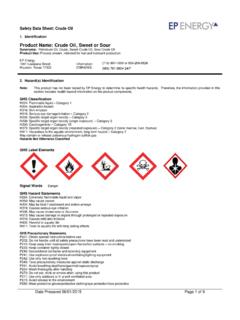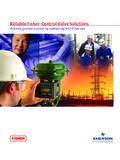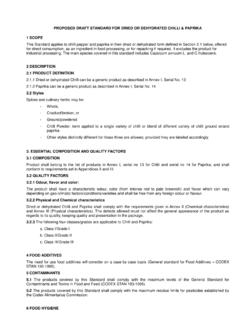Transcription of Everything You Need to Know About Marine Fuels
1 Everything You Need to know About Marine FuelsEverything You Need to know About Marine FuelsPublished by Chevron Global Marine ProductsJune 2012 Prepared by Monique B. VermeireGhent, BelgiumThis publication was prepared by Monique B. Vermeire of the Chevron Product Engineering Department in Belgium. Monique does exclusive work for Chevron Global Marine Products in the area of fuel technology, with related field support for matters concerning fuel quality issues and supports Chevron Global Marine Products with international fuel projects and at industry Introduction 1II. crude oil 31. How is a crude oil field formed? 32. Composition and classification of crude oil 33. crude oil refining and stocks for Marine fuel blending 3 III. fuel oil 71. fuel oil applications 72. fuel specifications 72a.
2 Significance of the Marine fuel properties listed in ISO 8217:2010 102b. Correspondence of specifications and test methods 123. Test specifications and precision 134. Onboard fuel oil treatment 134a. Conventional cleaning with purifiers/clarifiers 144b. Advanced computer-driven fuel cleaning system 155. fuel oil stability and compatibility 166. Commingling of Fuels 177. Microbiological contamination 178. Biofuels 189. Chemical fuel treatment 1810. fuel contamination in lubricants 19 Attachments 21 Attachment I: crude oil refining 21 Attachment II: Reproducibility (R) of Marine fuel test methods 22 Attachment III: Gas turbine fuel requirements 24 References 25 Everything You Need to know About Marine FuelsReference in this brochure to any specific commercial product, process or service, or the use of any trade, firm, or corporation name is for the information and convenience of the reader, and does not constitute endorsement, recommendation, or favoring by Chevron Global Marine energy.
3 Propulsion energy and electricityEverything You Need to know About Fuels | 1I. IntroductionFrom the early 19th century until the third quarter of the 20th century, steamships crossed the seven seas, gradually eliminating sailing ships from commercial the second half of the 20th century, the motor ship started to dominate. The history of the diesel engine began in 1892 with Rudolf Diesel and twenty years later, the first four-stroke Marine diesel engine ships were 1930, two-stroke designs took a strong lead as ships became larger and World War I and World War II, the share of Marine engine-driven ships increased to approximately 25 percent of the overall ocean-going fleet tonnage. A series of innovations of the diesel engine followed, which made it possible to use heavy fuel oil in medium-speed trunk piston engines, pioneered by the MV The Princess of Vancouver.
4 In the mid-1950s, high alkalinity cylinder lubricants became available to neutralize the acids generated by the combustion of high sulphur residual Fuels , and wear rates became comparable to those found when using distillate diesel ships using residual fuel oil gained in popularity and in the second half of the 1960s, motor ships overtook steamships, both in terms of numbers, and in gross tonnage. By the start of the 21st century, motor ships accounted for 98 percent of the world engines have also found their way into the power thermal plants, Marine engines and gas turbines, the energy obtained from fuel oil combustion is made available to fulfill our needs , be it for transport purposes or for electrical power | Everything You Need to know About FuelsChevron has been in the business of finding, producing, trading, and refining crude oil for over 125 You Need to know About Fuels | 3II.
5 crude Oil1. How is a crude oil field formed?The generally accepted theory is that crude oil was formed over millions of years from the remains of plants and animals that lived in the seas. As they died, they sank to the seabed, were buried with sand and mud, and became an organic-rich layer. Steadily, these layers piled up, tens of meters thick. The sand and mud became sedimentary rock, and the organic remains became droplets of oil and gas. Oil and gas passed through the porous rock and were eventually trapped by an impervious layer of rock, collecting at the highest formation of an oil/gas field requires the presence of four geological features: Source rock: contains suitable organic matter, which, under the conditions of heat and pressure, produces hydrocarbons Reservoir rock: a porous layer of rock in which the hydrocarbons are retained Cap rock: a rock or clay, which prevents the hydrocarbons from escaping Trap: a rock formation bent into a dome or broken by a fault which blocks the escape of the hydrocarbons either upward or sidewaysMost importantly, these four factors have to occur at the right time, place and in the right order for oil and gas to be formed and trapped.
6 Currently, successful petroleum exploration relies on modern techniques such as seismic surveying. The fundamental principle of seismic surveying is to initiate a seismic pulse at or near the earth s surface and to record the amplitudes and travel times of waves returning to the surface after being reflected or refracted from the interface(s) on one or more layers of rock. Once seismic data has been acquired, it must be processed into a format suitable for geological interpretation and petroleum reservoir Composition and classification of crude oilCrude oil is a mixture of many different hydrocarbons and small amounts of impurities. The composition of crude oil can vary significantly depending on its source. crude oils from the same geographical area can be very different due to different petroleum formation strata.
7 Different classifications of crude oil are based on:1. Hydrocarbons: Paraffinic crudes Naphthenic crudes Asphaltenic (aromatic) crudes Each crude oil contains the three different types of hydrocarbons, but the relative percentage may vary widely. For example, there is paraffinic crude in Saudi Arabia, naphthenic crude in some Nigerian formations and asphaltenic crude in American Petroleum Institute (API) gravity: The lower the density of the crude oil, the higher its API gravity. A higher API gravity means that the crude contains more valuable lower-boiling Sulphur content: The ever-growing concern for the environment and the impact on refining cost calculations are the basis for this classification. Sweet crude (low sulphur) Sour crude (high sulphur)3. crude oil refining and stocks for Marine fuel blendingPetroleum refineries are a complex system of multiple operations.
8 The processes used at a given refinery depend upon the desired product slate and characteristics of the crude oil mix. Today, complex refining has a definite impact on the characteristics of Marine diesel and intermediate fuel oil (IFO) bunker | Everything You Need to know About FuelsTypical refining schemes and the influence on Marine fuelsStraight run refinery Atmospheric crude distillation and further refining of distillates: * Diesel refers here to specific atmospheric distillation cuts, and is not related to an engine application. Straight run stocks for Marine fuel blendingLight diesel, heavy diesel, and straight run residueStraight run Marine gasoil and distillate Marine diesel (MDO) Marine gasoil and distillate Marine diesel oil (MDO) are manufactured from kero, light, and heavy gasoil run IFO 380 mm2/s (at 50 C)This grade is obtained by blending the atmospheric residue fraction (typical viscosity of About 800 mm2/s at 50 C) with a gasoil run lower viscosity grade IFOsBlending to lower grade IFOs is done from the IFO 380 mm2/s (at 50 C) using a gasoil cutter stock or with Marine IFOs have good ignition characteristics, due to the high percentage of paraffinic material still present in the atmospheric residue, and the paraffinic nature of the cutterstocks used.
9 The high amount of paraffinic hydrocarbons in the straight run Marine Fuels leads to relatively low densities for these products, ensuring easy and efficient onboard fuel product slate of a straight run refinery, with its heavy fuel production of approximately 50% of the crude feed, does not correspond to the product demand in industrialized countries where the ever-growing demand for light products (jet fuel , gasoline, and gasoil) coincides with a strong reduction in the demand for heavy fuel (10 to 15% of the crude oil). This results in the need to convert the residue fraction into lighter, hence, more valuable, fractions and to the construction of complex complex refinery processing scheme can be separated into two parts:1. crude oil distillation (atmospheric and vacuum distillation)2.
10 Streams from the vacuum distillation unit are converted through catalytic and thermal cracking refineries have been favored since the early 1980s and are intended to boost gasoline production. All further information herein is based on a complex refinery. The main Marine fuel blending components from a fluidized bed catalytic cracking (FCC) refinery with visbreaker are the same distillates as those from a straight run refinery (light and heavy diesel) as well as light cycle (gas) oil (LC(G)O) and heavy cycle oil (HCO) from the catcracker and visbroken residue from the DIESEL*HEAVY DIESEL*DistillatesAtmospheric distillationunitRESIDUAL fuel OILC rude OilEverything You Need to know About Fuels | 5 Atmospheric residue is used as feedstock for the vacuum unit and will seldom be available for fuel detailed information on complex refining is provided in Attachment Fuels resulting from a catalytic cracking/visbreaking refinery have a composition that is markedly different from that of an atmospheric gasoil (MGO/DMA/DMZ)






